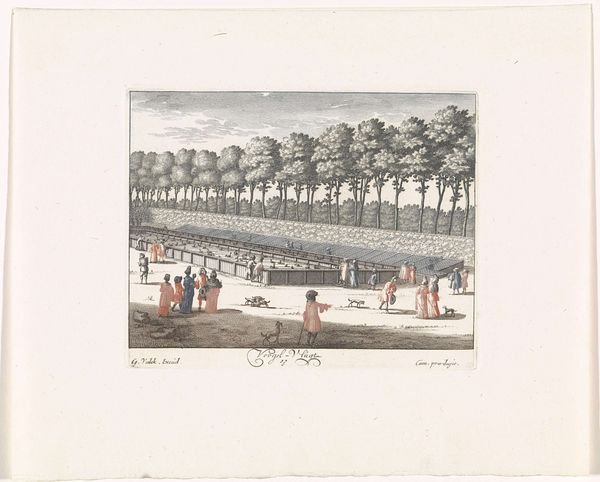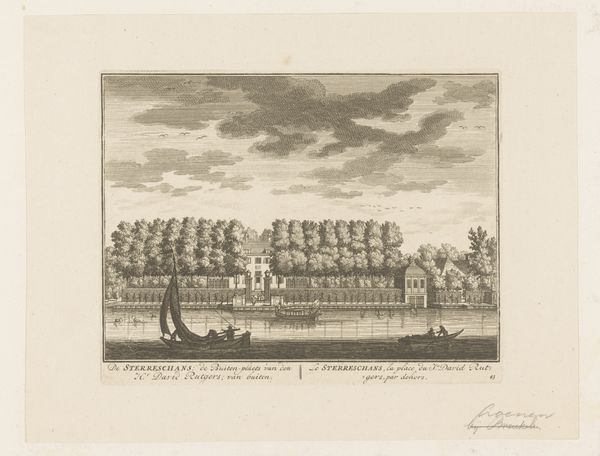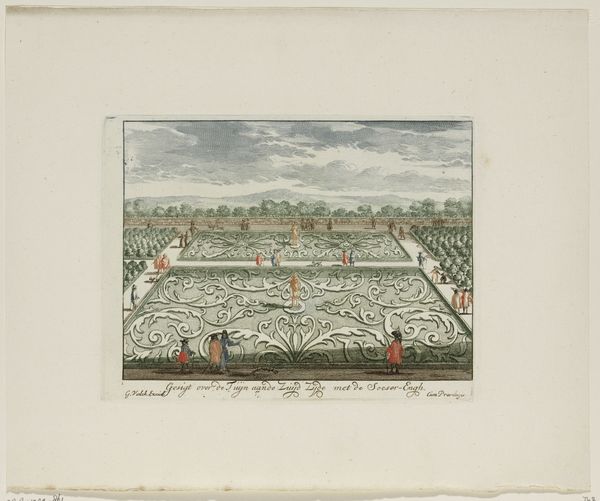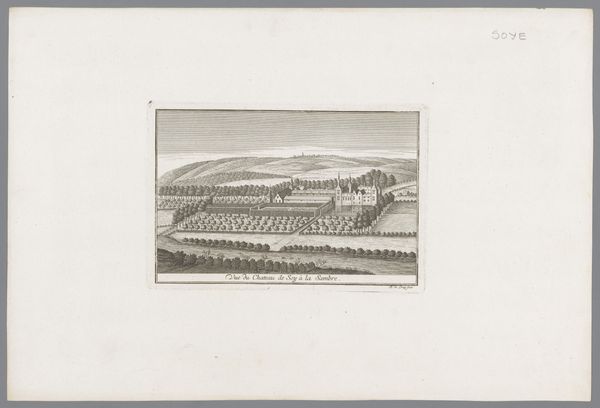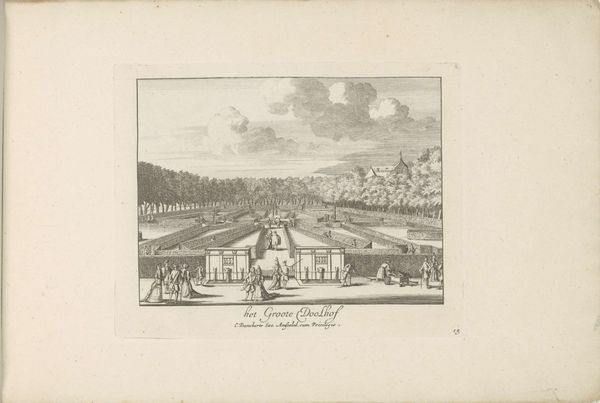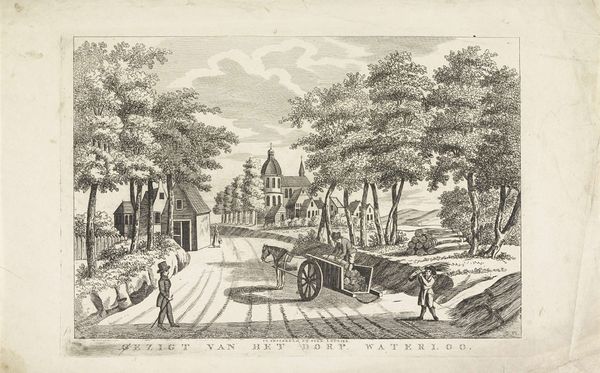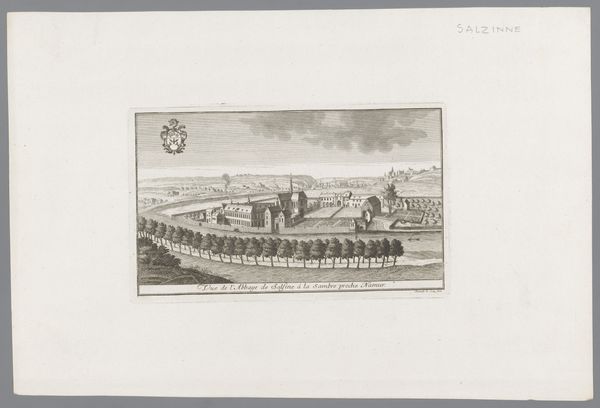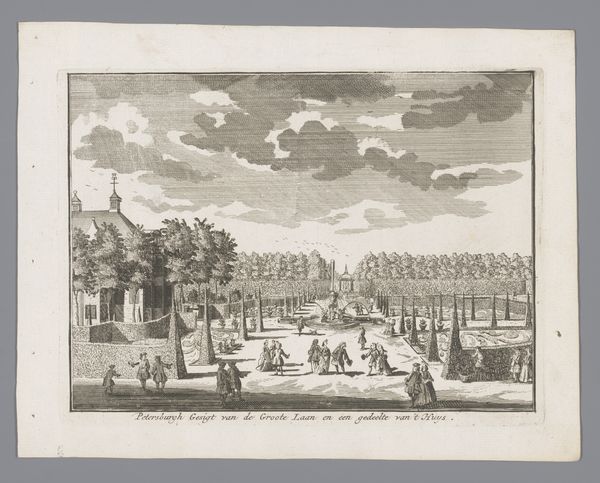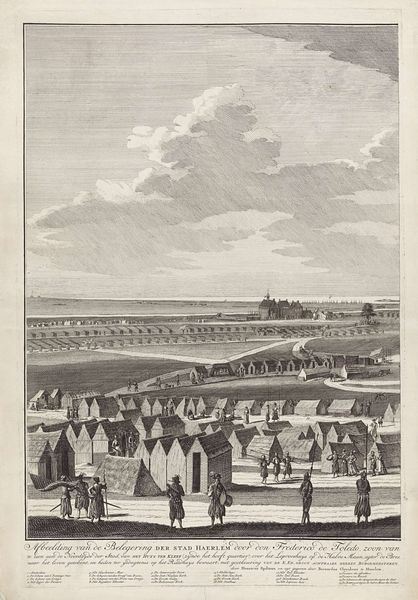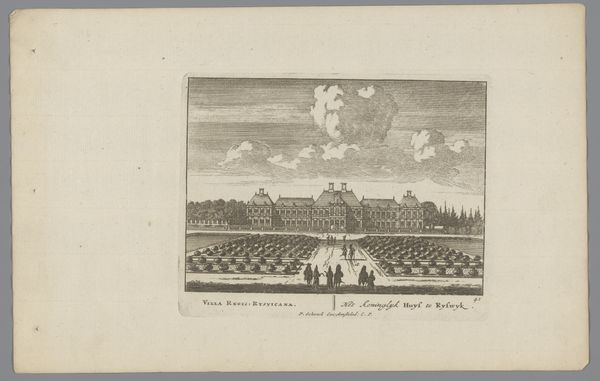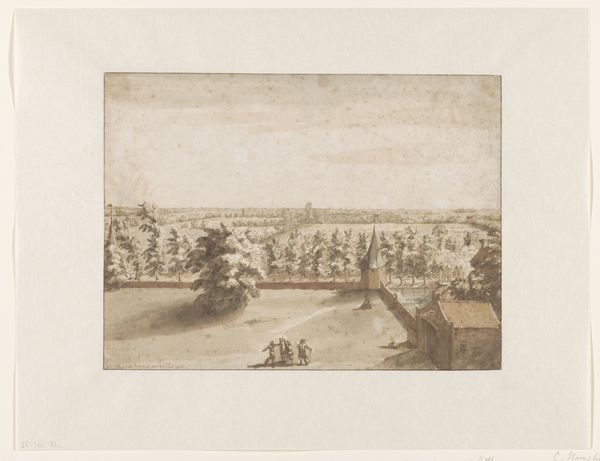
print, engraving
#
baroque
# print
#
light coloured
#
landscape
#
perspective
#
cityscape
#
engraving
Dimensions: height 135 mm, width 171 mm
Copyright: Rijks Museum: Open Domain
Curator: This engraving from 1695 offers us a glimpse into the gardens of Soestdijk Palace, rendered with a remarkable attention to perspective. It’s an anonymous work held in the Rijksmuseum’s collection. Editor: Well, first off, it strikes me as incredibly…organized. Like, hyper-organized to the point of being almost unnerving. Perfectly symmetrical, intensely geometric… it’s less a garden, more a stage set for a royal game of chess! Curator: Absolutely. The baroque period was all about order and control, reflecting the social hierarchies and the desire to impose human will upon nature. You can see how the garden design mimics architectural principles, almost like an outdoor room. This wasn’t just about plants; it was about projecting power. Editor: Power, yes! It does feel quite rigid, a tad soul-less almost. But the light tones and the details – the fountains, the statues, the little dogs scampering around! – keep it from feeling entirely sterile. What do you make of all those identically planted pots on the right, though? Curator: Those speak to both status and control. Orangeries became fashionable in the 17th century. Growing citrus, especially oranges, demonstrated great wealth. The laborious act of moving them indoors during the winter was the real message. It signified that the palace could defy not only social status, but nature itself. Editor: A defiant citrus parade! I love that. The formal poses of the figures walking the grounds emphasize that as well – everything feels staged and important. Are these gardens still there? Can you still feel the history, that "order", or did time have a say in softening its sharp edges? Curator: Parts of the garden have been maintained true to the original plans and styles. While some aspects have changed, it still embodies the spirit of that time. As such, it represents the politics of display during that era. Editor: Knowing some of that social history gives me a new sense of what this garden – or this image of the garden - embodies. Thank you. Curator: My pleasure! Hopefully this piece sparked questions about the dynamic between social spaces, power and art.
Comments
No comments
Be the first to comment and join the conversation on the ultimate creative platform.
